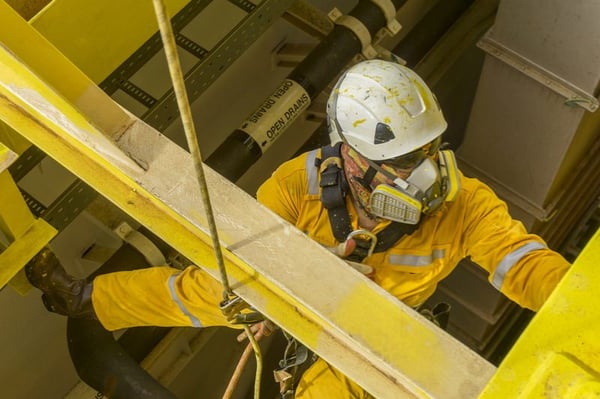Have you ever had that job that no matter what you did, you couldn’t get the smell out of your nose?
It’s like you actually inhaled the source of the funk and its sitting right there in your snout, even hours after your shift ended. If you have, you know exactly what we’re talking about. If not, consider yourself lucky.
Well, fortunately there are respirator options out there to help with some of those organic vapors and fumes such as livestock, landfills, rotten organic matter and other things that you’d rather not smell (including your co-worker Ralph…let’s be honest) .

What does nuisance level mean?
If your work-related contaminants are not above OSHA’s permissible exposure limits (PEL), they are considered nuisance level. While you may have to suffer through the day with Ralph smelling like he bathed in corn chips; you don’t have to deal with stink of the job.
Bottom line: It ain’t gonna kill you, but you may feel more comfortable with protection or simply want to filter out the smell. Just remember that you can’t use nuisance level filter media in environments that are considered immediately dangerous to life and health (IDLH).
What makes nuisance level organic vapor cartridges different than other filters?
These are filters that can reduce your exposure to different organic vapors that fall under OSHA’s danger zones, but are still stinky. These respirators are filled with activated carbon which filters out irritants like nuisance levels of acid gas. The carbon is activated by heating the material which creates a ton of “micropores” that adsorb materials. The vapors move through one pore to the next allowing you to breathe in fresh, filtered air.
▲ Translation: No more stank.
Things that affect service life of these filters:
- Exposure concentration: Concentration levels depend on the kind of contaminant you are working with. Keep in mind—some contaminants break down your filter’s service life much quicker than other.
- Migration: (continued adsorption of contaminants) This is a problem for organic vapor cartridges during periods of rest or storage, so don’t just toss your respirator in your toolbox. Store your filter in a sealed bag any time you take a break.
- Temperature: The hotter it is, the shorter the service life. This applies in indoor settings, as well outdoor jobsites.
- Humidity: Water vapor takes up space in the carbon pores and the moisture will compete with organic vapors for a spot on the adsorbent. Guess who wins?
- Breathing rate: Don’t rely how breathing resistance to decide when to change out your filter. Even if you can breathe easy, they could be at the end of their life. Change them out according to local regulations, end-of-service-life indicator, taste, smell and irritation from the contaminant.
- Amount of activated charcoal: Some cartridges/have different amounts of activated carbon. Always double check with manufacturer that it’s right for the job.

Don’t confuse Nuisance Level Organic Vapor (OV) with OV above OSHA’s danger zones!
You wouldn’t wear a dusk mask when you’re working with asbestos, would you?
Just like with any kind of personal protective equipment, you need to match the filter or cartridge to the job. Activated carbon on its own won’t adsorb hazards above OSHA’s PEL like acid gas, ammonia, formaldehyde or other compounds. So, manufacturers add other materials to help filter the bad stuff.
These applications need more than Nuisance Level Protection:
- Multi-purpose
- Organic vapor (OV)
- OV and acid gas
- OV, acid gas and particulates
- Combination gas and vapor
- OV and particulates
- Pancake with odor relief
- OV and multi-gas
- OV, multi-gas and particulate
- OV and formaldehyde
- OV, chlorine, hydrogen chloride, sulfur dioxide, hydrogen sulfide or hydrogen fluoride
Two things to remember when you choose a cartridge/filter:
- There are options that provide organic vapor relief for higher concentrations of contaminants such as lead, asbestos, cadmium, arsenic and MDA.
- There are options that are effective for organic level odor relief that are below the permissible limits. The important thing to know about choosing the right filter media is to know the contaminants and concentration levels of what you’re working with.
✔ Don’t forget the basics taking care of your PPE. From regular fit testing to cleaning and maintenance, there is a lot to consider about respiratory protection.
You can't just toss your respirator in a toolbox and hope it protects you tomorrow. And maybe Ralph will get the hint when you are still wearing your respirator at lunch.
If you need some more assistance choosing the best respirator and filter media for your job, our short video can help, or just ask us! Look for the HELP ME button on our website or right here!
What are your thoughts on the use of correct respirator filter media on the job? Let us know in the comments below!
Safety: It’s Your Life, It’s Our Business









